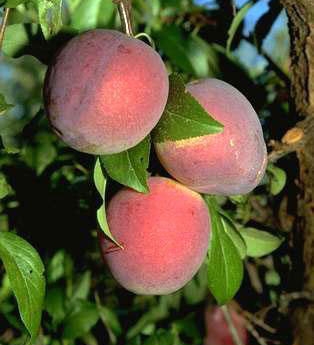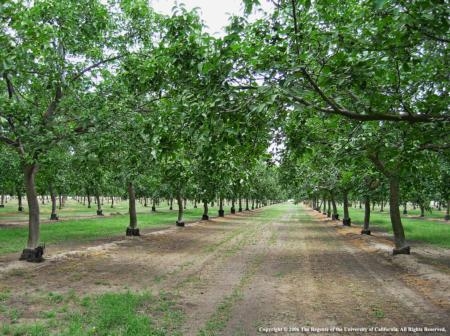UC Blogs
How Blue Can It Be?
How blue can it be? We spotted a metallic blue bug, one of nature's most amazing colors, last Sunday. It was in the Mostly Natives Nursery in...
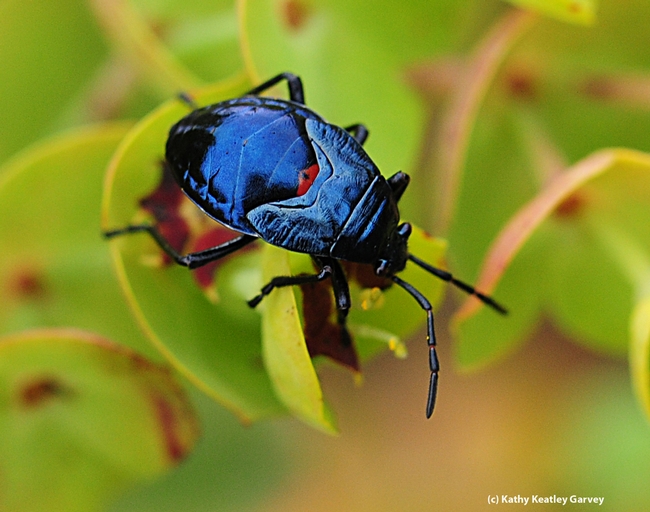
Close-up of a bordered plant bug, family Largidae. (Photo by Kathy Keatley Garvey)
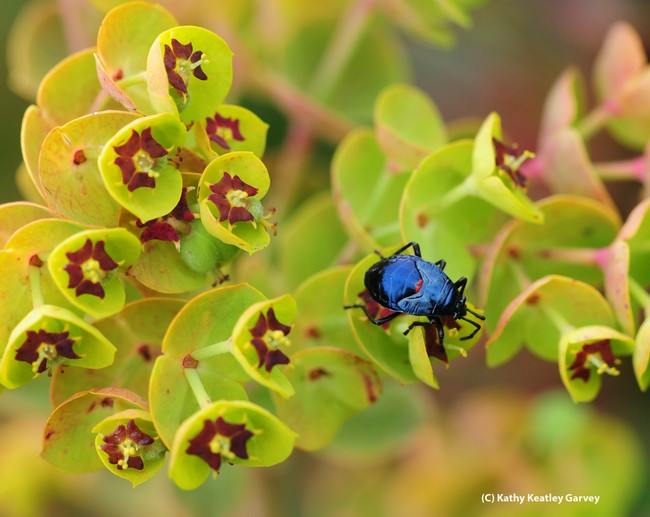
Bordered plant bug, family Largidae, crawling on a Euphorbia. (Photo by Kathy Keatley Garvey)
Growing a better stone fruit
In a search for new varieties of peaches, plums and nectarines, no stone is left unturned, reported Robert Rodriguez in the Fresno Bee.
The story centered around Kingsburg Orchards, one of the largest local tree fruit producers. The organization's board met recently to sample 30 experimental stone fruit varieties.
Kevin Day, UC Cooperative Extension advisor in Tulare County, said the push to find an edge in the marketplace is no surprise in today's highly competitive retail market.
"People are doing anything they can for product differentiation, including having exclusive varieties," Day said. "And the focus is really shifting to flavor."
Other news
Climate change is another reason to protect farmland
Rich Rominger and Renata Brillinger - Sacramento Bee
This op-ed piece references a new report released by the California Natural Resources Agency and the California Energy Commission that focused on a study by Louise Jackson and her team of UC Davis researchers. "Thanks to the team of UC Davis researchers and government funding for their study, we can add climate protection to the compelling list of reasons to invest in the long-term protection of California's farms and ranches," wrote the authors.
Progress reported in efforts to control growing threat to local and state citrus crops
Lance Orozco - KCLU, California Lutheran University Radio
Orozco interviews Ted Batkin of the Citrus Research Board and John Krist of the Ventura County Farm Bureau. In the six-minute story, Krist mentions work by Mark Hoddle, UC Cooperative Extenison specialist in the Department of Entomology at UC Riverside, to introduce natural enemies of Asian citrus psyllid to help bring down populations of the exotic pest.
Sonoma County Fair
Saturday I went to the Sonoma County Fair in Santa Rosa. This year's theme is Cruise On In. The director of the flower exhibits, Greg Duncan, took that idea and came up with a Ports of Call theme for the garden competitions. When you first walk in, spread out before you is a large body of water containing a cruise ship, a mermaid, and a desert island. Clustered around this central area are the professional competition gardens that each represent an exotic Port of Call. There is Istanbul, Turkey, San Francisco, CA, Barcelona, Spain, Rio De Janero, Brazil, St. Thomas, Virgin Islands, Key West Florida, Mykonos Greece, Cozumel, Mexico, Ketchikan, Alaska, Sorrento,Italy, and Papeete, Tahiti.
As you can imagine it was an amazing display with riotous colors. The amateur gardens with similar ports of call themes were just outside under shade. What I thought was most creative, however was a display tucked in an end of the main display hall. It was a take off on the famous sumptuous cruise ship buffets. The kick was instead of food, they were serving up plants. Talk about thinking outside the box.
So if you can't afford a world cruise this year or you would love some inspiration, check out the Sonoma Fair. It continues through August 12, 2012. They did mention a plant sale the morning after the fair ends.

photos by Karen Metz
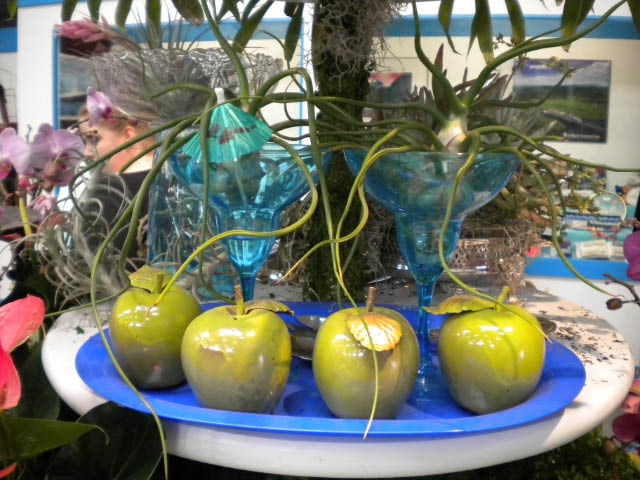
sonoma co fair 2
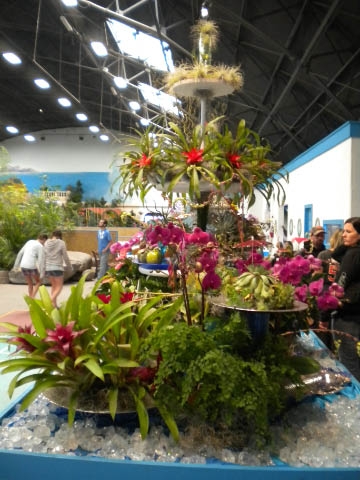
sonoma co fair 3

sonoma co fair 4
An Honor Well Deserved
Sometimes you'll see him sitting cross-legged on the floor, circled by first graders. They're asking questions like "What is an insect?" and "How...
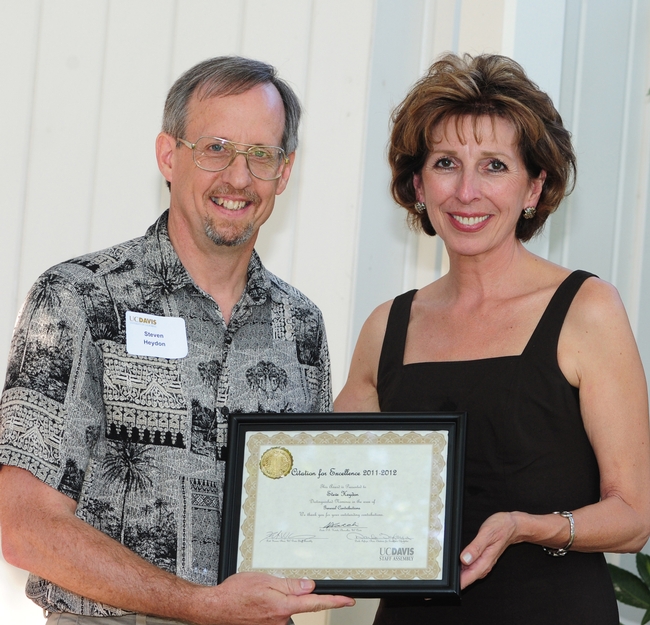
Bohart senior museum scientist Steve Heydon with Chancellor Linda Katehi. (Photo by Kathy Keatley Garvey)
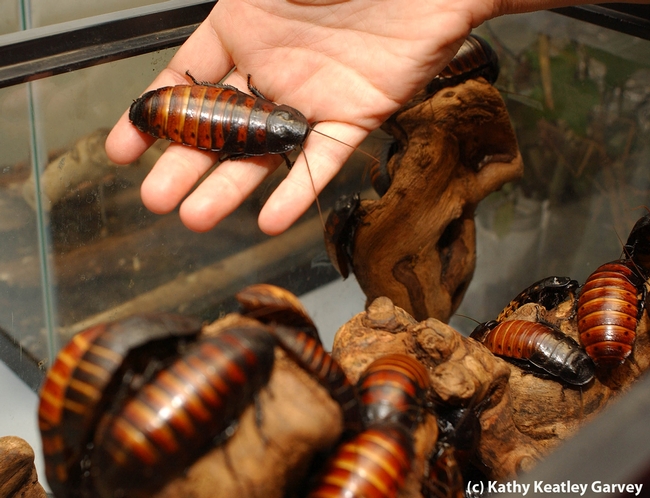
Madagascar hissing cockroaches are a favorite of Bohart Museum visitors, and senior museum scientist Steve Heydon is eager to talk about them. (Photo by Kathy Keatley Garvey)
UC research predicts climate change effects in California
The report, the third such assessment since 2006, provides new data to help Californians plan and adapt to climate change.
"Significant increases in wildfires, floods, severe storms, drought and heat waves are clear evidence that climate change is happening now. California is stepping up to lead the way in preparing for — and adapting to — this change," said state Secretary for Natural Resources John Laird. "These reports use cutting-edge science to provide an analytical roadmap, pointing the way for taking concrete steps to protect our natural resources and all Californians."
A study led by Louise Jackson, UC Cooperative Extension specialist in the Department of Plant Sciences at UC Davis, took an inventory of greenhouse gas emissions on Yolo County farmland and studied how agriculture can adapt to climate change.
An op-ed co-authored by Richard Rominger, a farmer and member of the UC President’s Advisory Commission on Agriculture and Natural Resources, and published in the Sacramento Bee noted the study “found that urban land accounts for 70 times more greenhouse gas emissions per acre than cropland.” A good reason to protect cropland.
The website based on the Jackson study provides a tool for Yolo County farmers and policymakers to plan for the changes that occur at the regional level with climate change.
For planning on a larger scale, a coalition of scientists and state agencies has developed Cal-adapt, a web-based climate adaptation planning tool. Cal-adapt allows users to identify potential climate change risks in specific geographic areas throughout the state. Users can query by location or click on an interactive map to explore what climate impacts are projected to occur in different regions of the state.
“Climate change is expected to affect the quantity and timing of water flow in the state,” explained Kaveh Madani, a former postdoctoral research scholar in UC Riverside’s Water Science and Policy Center, who led a research project on climate change effects on hydropower production, demand, and pricing in California.
“If California loses snowpack under climate warming, these high-elevation reservoirs might not be able to store enough water for hydropower generation in summer months when the demand is much higher and hydropower is priced higher,” said Madani, currently an assistant professor of civil, environmental, and construction engineering at the University of Central Florida. “California might, therefore, lose hydropower in warmer months and hydropower operators may lose considerable revenues.”
Max Moritz, UC Cooperative Extension specialist in the Department of Environmental Science, Policy and Management at UC Berkeley, contributed a paper to the extensive report about increased vulnerability to wildland fires in the state.
“The incredible breadth of studies, as well as the depth of their analyses, reveals just how much the University of California has to offer in preparing us all to adapt to a changing climate,” Moritz said of the full report.
Read more on specific campus researchers' contributions to the report in these news releases:
- UC Berkeley: State taps UC researchers for expertise on climate change impacts
- UC Davis: Scientists examine California's vulnerability to climate change
- UC Merced: More homes in danger from fire in coming decades
- UC Riverside: California’s hydroelectricity production is vulnerable to climate change
- Scripps: More hot Julys, rises in sea level three feet or more forecast
For highlights of the reports in Our Changing Climate, see the California Energy Commission’s press release. The full reports can be downloaded from the CEC’s website.


